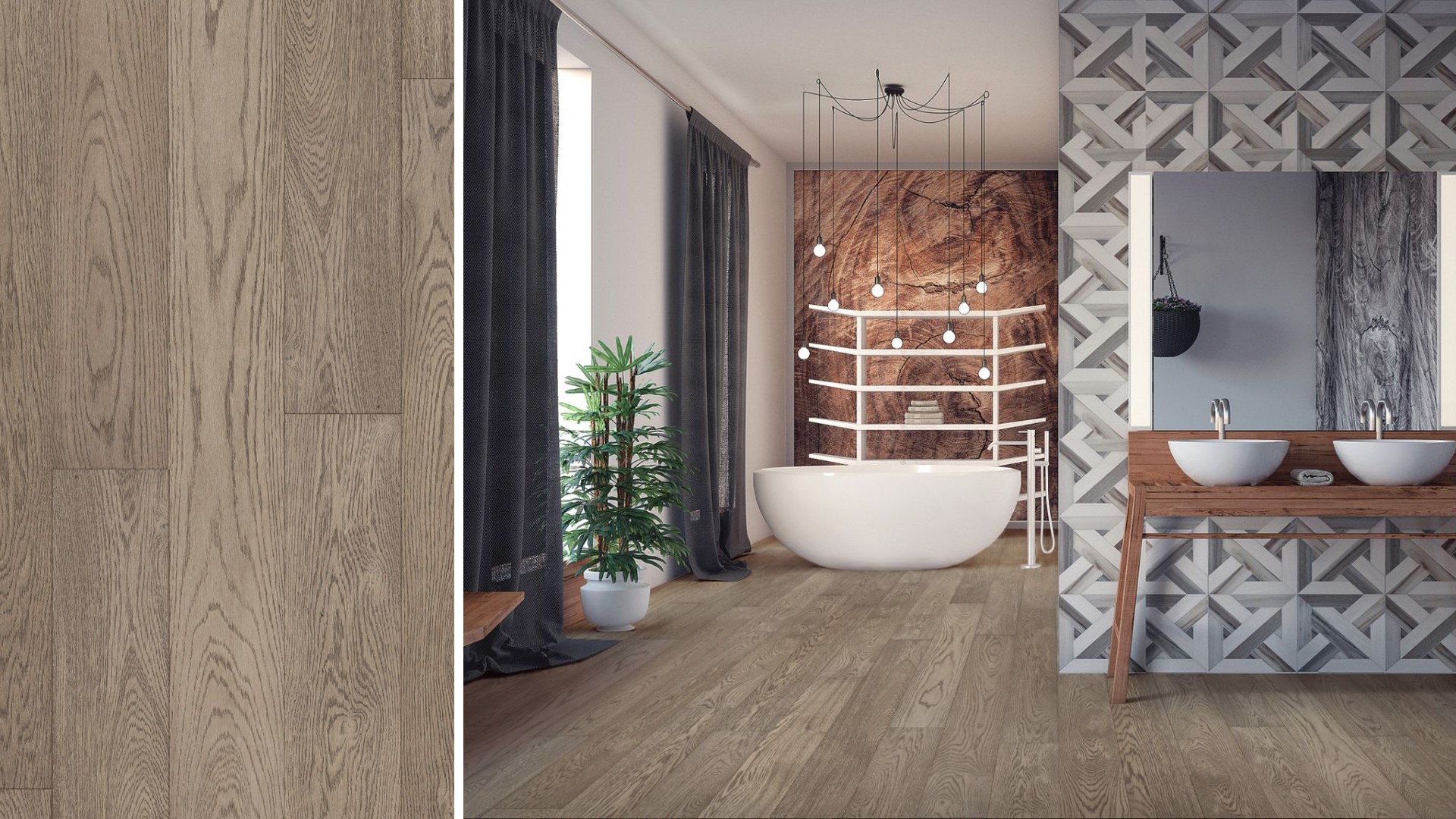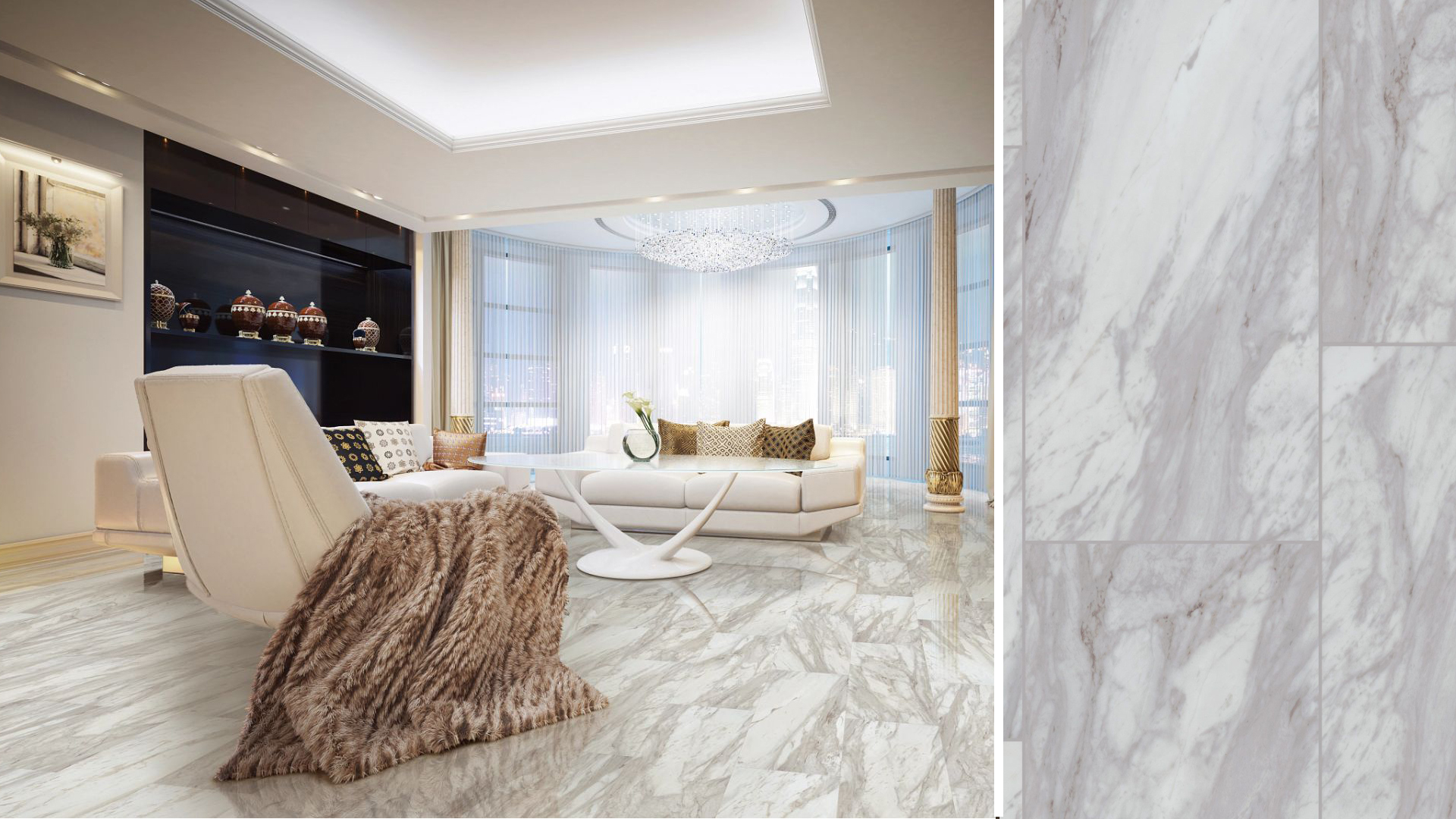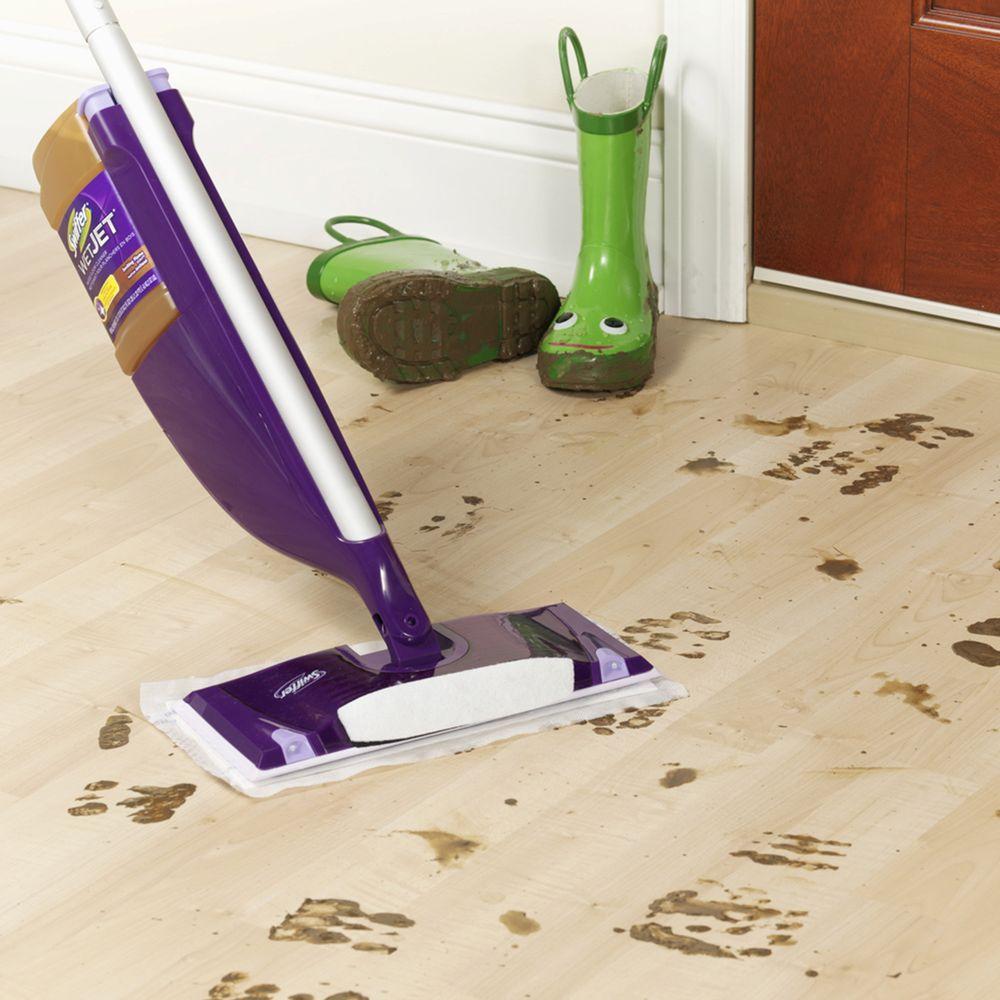Luxury vinyl flooring is durable and cost-efficient. High traffic homes and pet owners take note: Vinyl is water, heat, and scratch resistant! Available in realistic stone, tile and wood looks, vinyl is a low maintenance and beautiful flooring solution. Luxury vinyl comes in tile and plank forms. These product types are shortened to LVP (luxury vinyl planks) and LVT (luxury vinyl tile). Browse our wide selection of luxury vinyl.
Plank Size - typically are 48 or 36 inches long. With most planks, the width is about 6 inches, though some go as much as 7 3/4 inches wide.
Tile Size - these are typically 12"x24"


- Waterproof: All rigid core vinyls will be 100% waterproof. Moisture and humidity will not damage or cause the planks to swell.
- Appearance: Rigid core vinyls are available in a variety of colors, textures and styles. These vinyls mimic real hardwoods and tile looks.
- Easy Installation: Rigid core click vinyls feature a tongue and groove system, much like traditional vinyl or laminate.
- Comfort: A rigid core vinyl is more sturdy and cushioned under foot than a traditional vinyl due to the dense core and thickness of the plank.
- Sound: With the dense core, these planks tends to have a quieter sound. You should not hear a hollow sound when you walk on a rigid core vinyl.
- Affordability: Rigid core vinyl plank flooring is very budget friendly. Depending on the type of rigid core, brand and features, there are low end to high end rigid core vinyls on the market.
- Easy Maintenance and Cleaning: Just like a traditional vinyl, rigid core vinyls are just as easy to clean and maintain! Simple maintenance and regular cleaning will be enough to keep these floors looking great.

Material: Most is polyurethane. Better brands add ceramic beads to the urethane for added resistance to wear and scratches. Some even use crushed cultured diamonds.
Thickness: Wear layers start at 6 mils thick for cheap vinyl tile flooring. The best lines from most brands have wear layers of 20 mils or 22 mils.
Vinyl (PVC plastic) is a very versatile material. With it, remarkably authentic-looking designs can be produced to mimic wood, stone, ceramic tile and other materials. The designs are printed for outstanding realism.
The vinyl layer is waterproof and can be textured, for example, to give it a genuine woodgrain or stone feel.
Stone with Polymers
SPC (Stone Polymer Composite) features a core of around 60% lime- stone, polyvinyl chloride and plasticizers. It provides rigidity and stability for the plank/tile. This core is ultra-dense with no foaming agents like traditional WPC flooring. It gives you slightly less resilience underfoot, but it makes the flooring incredibly durable.
The WPC (Wood Polymer Composite) core is made by combining wood pulp, plasticizers and foaming agents to create a sturdy, waterproof core that is stable, yet comfortable under foot. WPC vinyl cores are thick, resilient, and dense.
Most luxury vinyl plank flooring includes attached pad. Most are made of cork, foam or rubber. This backing contributes to the product thickness, noise reduction with acoustical properties and helps conform to and hide subfloor irregularities.

More about Rigid Core LVT
Comfort
When it comes to comfort and how the floors feel underfoot, WPC seems to hold all the cards. The limestone composite core in SPCs makes these floors strong and stable, but can make them feel cool underfoot.
Also, SPC flooring is usually thinner, with most planks ranging between 3 mm and 7 mm thick, and this plays a huge role in determining their level of comfort. WPC planks are usually between 5 mm and 8 mm thick, which makes them feel more cushioned when walked on.
In addition, because WPC floors have a wooden core, they don’t get as cold as SPCs. They retain heat much better, making them feel more comfortable underneath your feet.
Resilience And Durability
Both SPC and WPC vinyl floors can withstand daily abuse and last for many years. The thick wood-like core in WPCs will usually keep the planks quieter when stepped on, but will not be as dense as the stone core in SPCs. As such, SPC floors will be far much durable than their WPC counterparts.
If you are looking for flooring that would be perfect for a commercial setting, the SPC would be a great option, as it can hold up extremely well in high traffic. It would also be an amazing choice for rooms with heavy objects. This flooring can handle dings and scratches much better than WPC flooring. Just make sure you are buying a brand that has good wear and tear layer.
Pet-Friendliness
With more and more homeowners turning toward flooring products that are comfortable for their furry friends, SPC and WPC vinyl manufacturers have tried their best to keep up with the trend.
Any animal that lives with you inside the house is bound to cause problems with your flooring, that’s why it is important to get products that will make life easier for everyone.
Vinyl has been found to be generally more pet-friendly than carpet or hardwood. WPC flooring, especially, is considered a better choice for pets because its core is not as hard as that of SPC floors and it retains heat pretty well. A WPC floor will be more comfortable for pets to walk and nap on.
- Place floor mats at the entry points of the home to catch loose dirt
- Vacuum and sweep
- Damp/wet mop regularly to remove dirt build up
- Plank/tile replacement is possible by a trained installer
- Avoid steam cleaning. Instead, simply stick with a regular mop or swiffer

